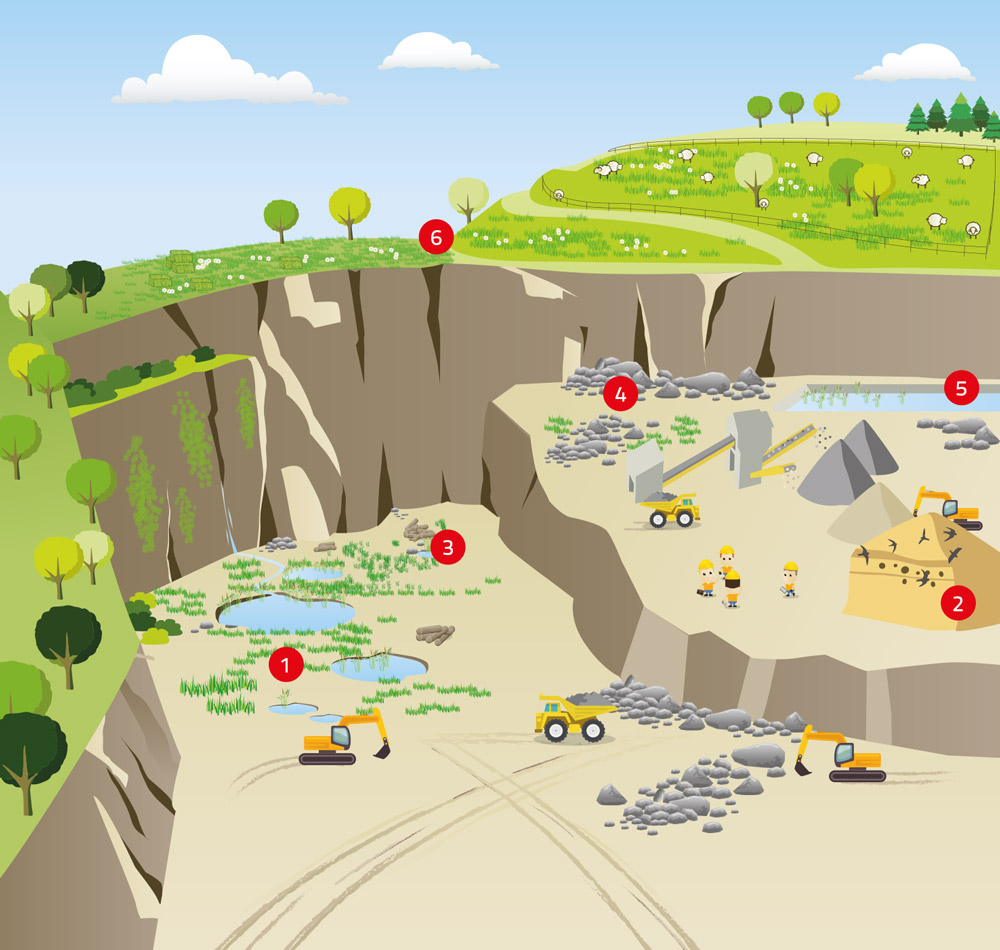
Virtual tour
In Belgium, several rare and protected species benefit from habitats generated by mining activity. This is the case, among others, for the sand martin, lizards, wall lizards, natterjack toads or typical algae typical of poor environments such as characeae.


